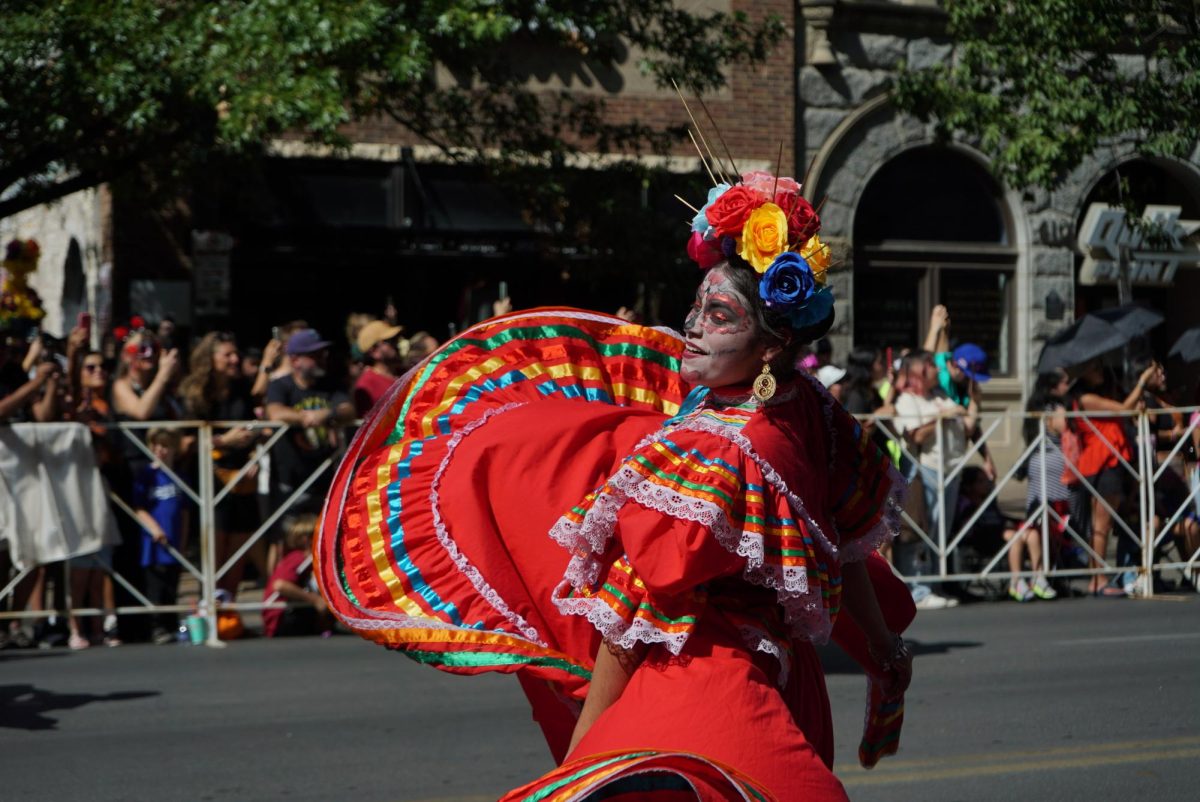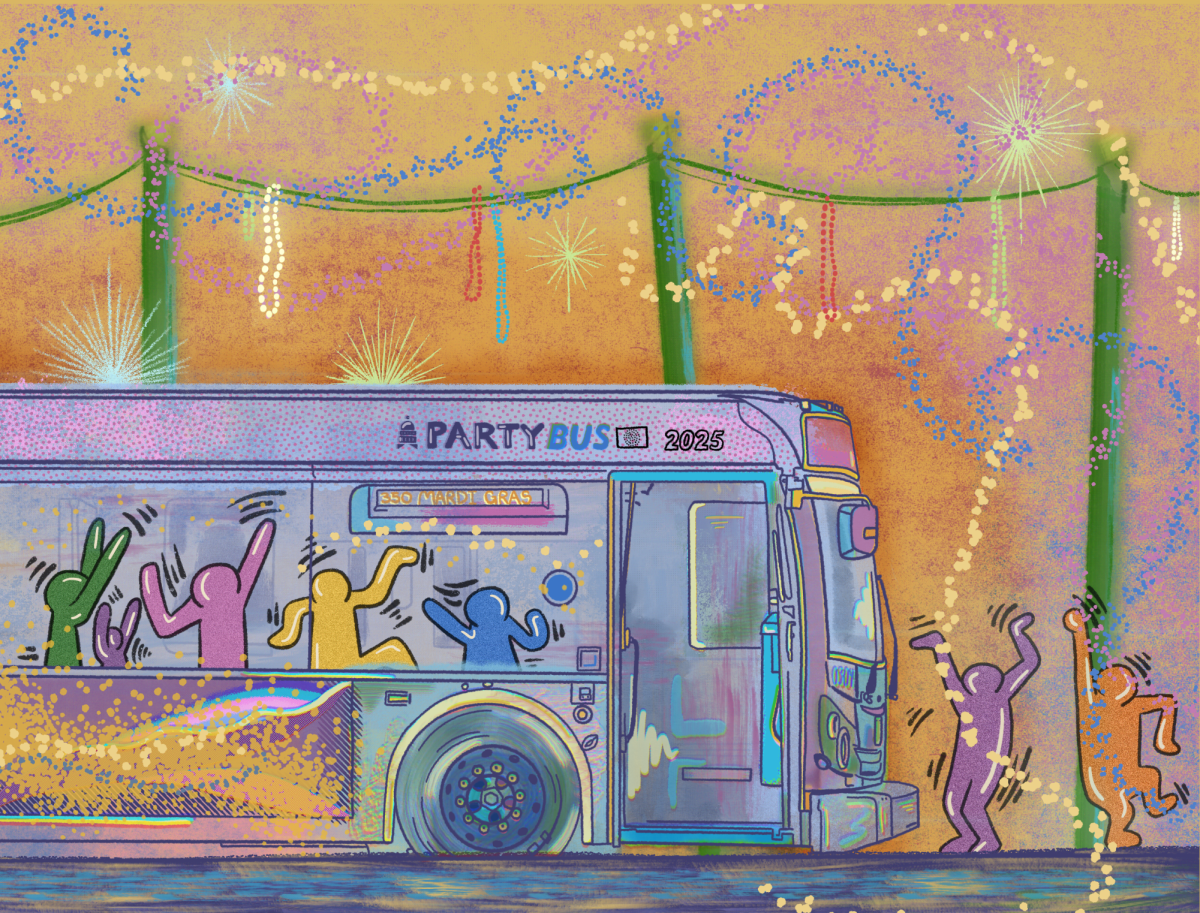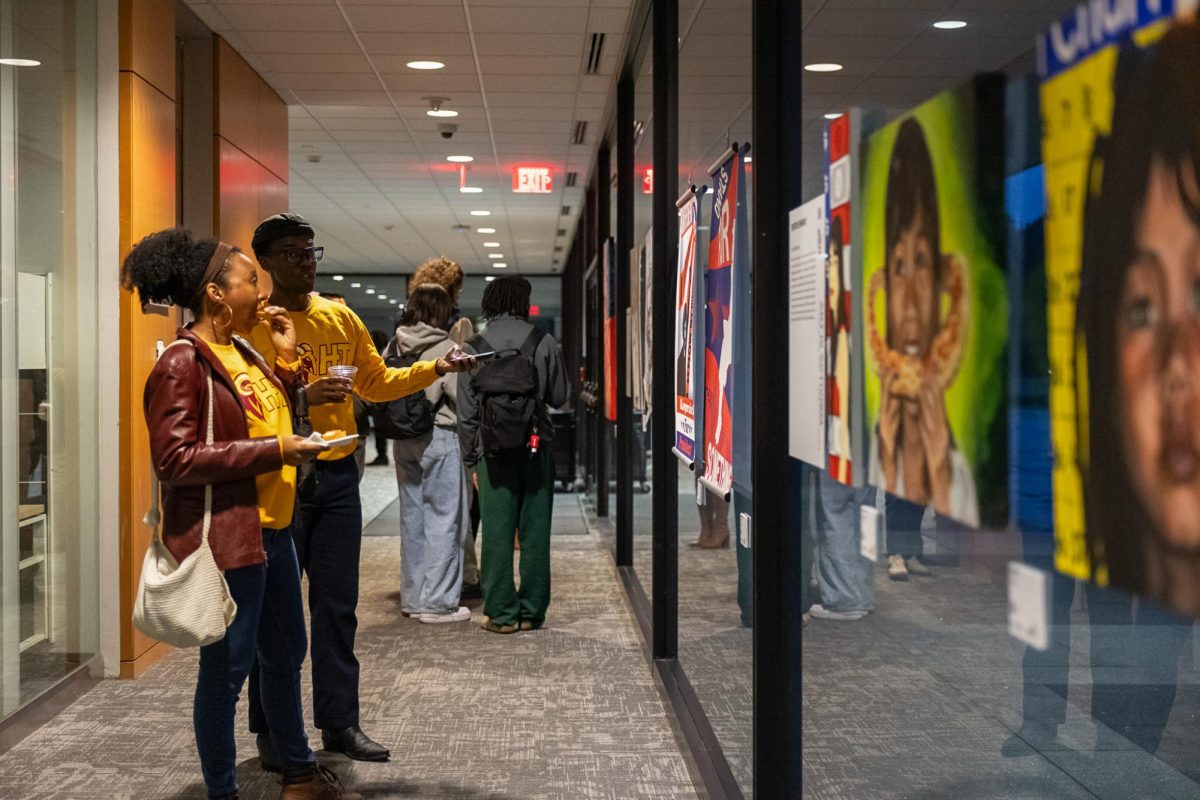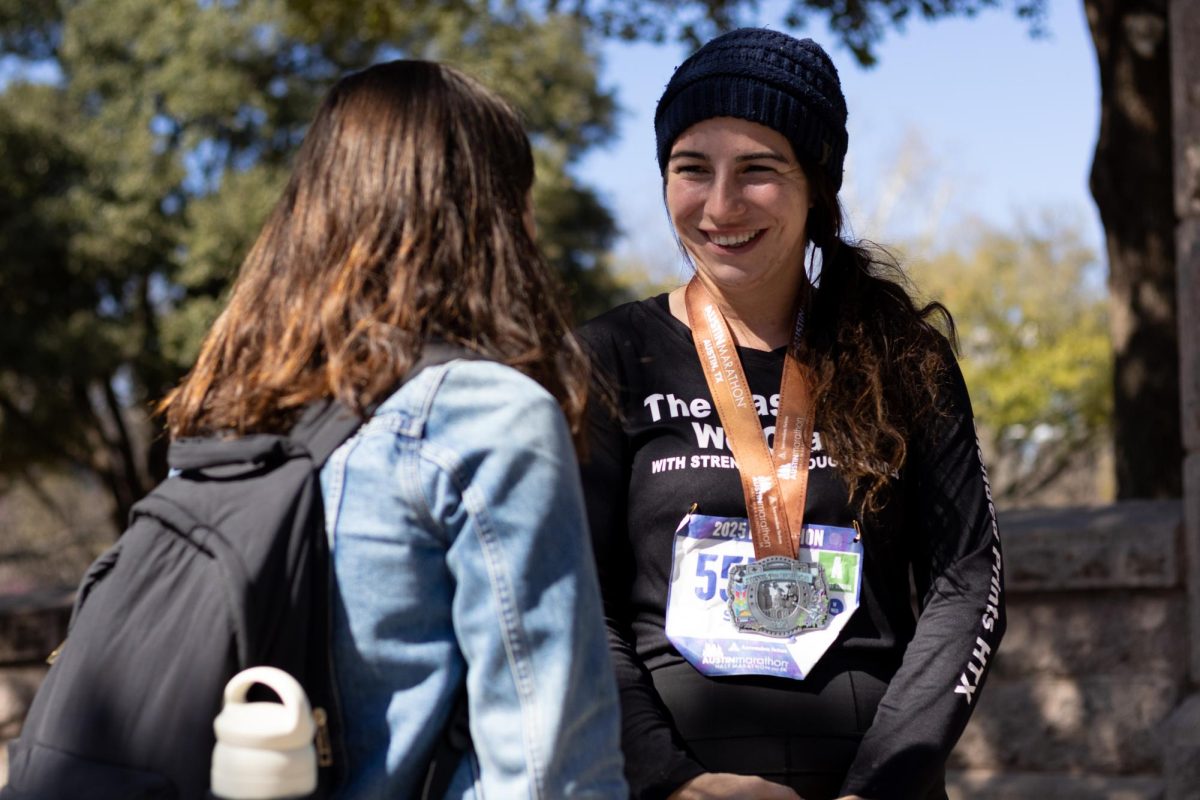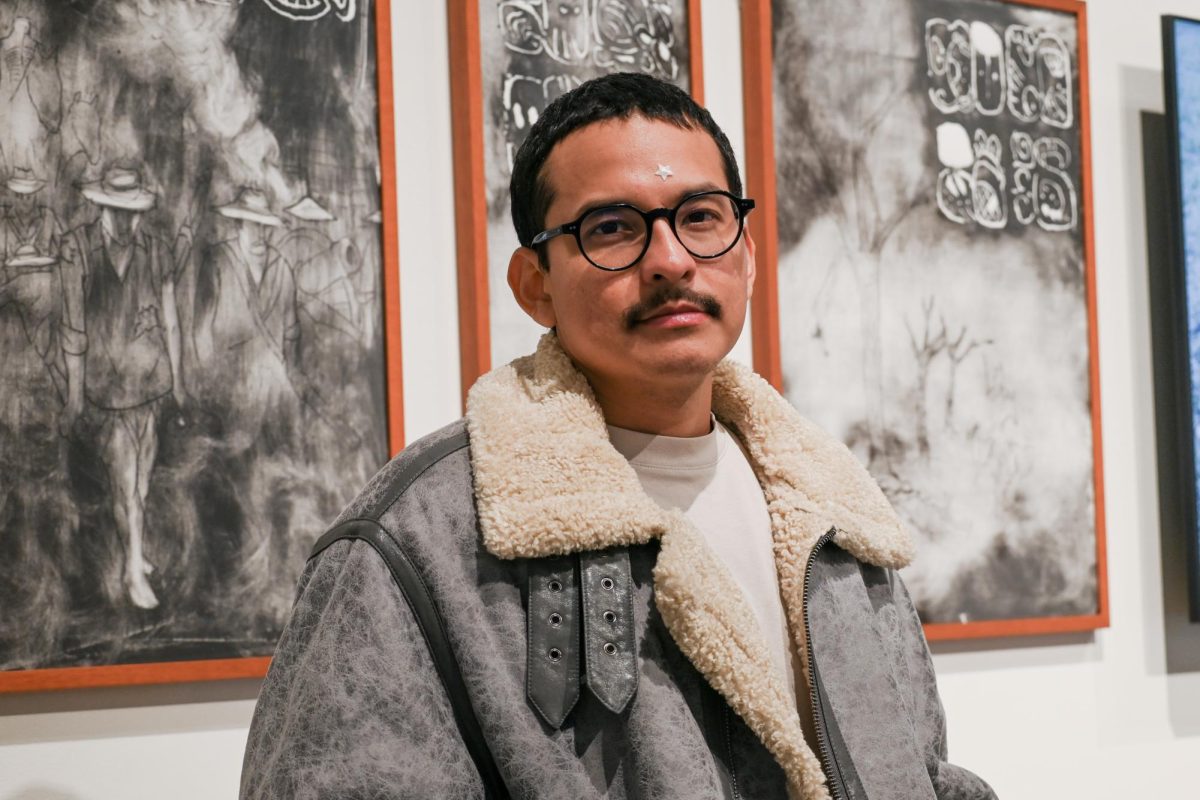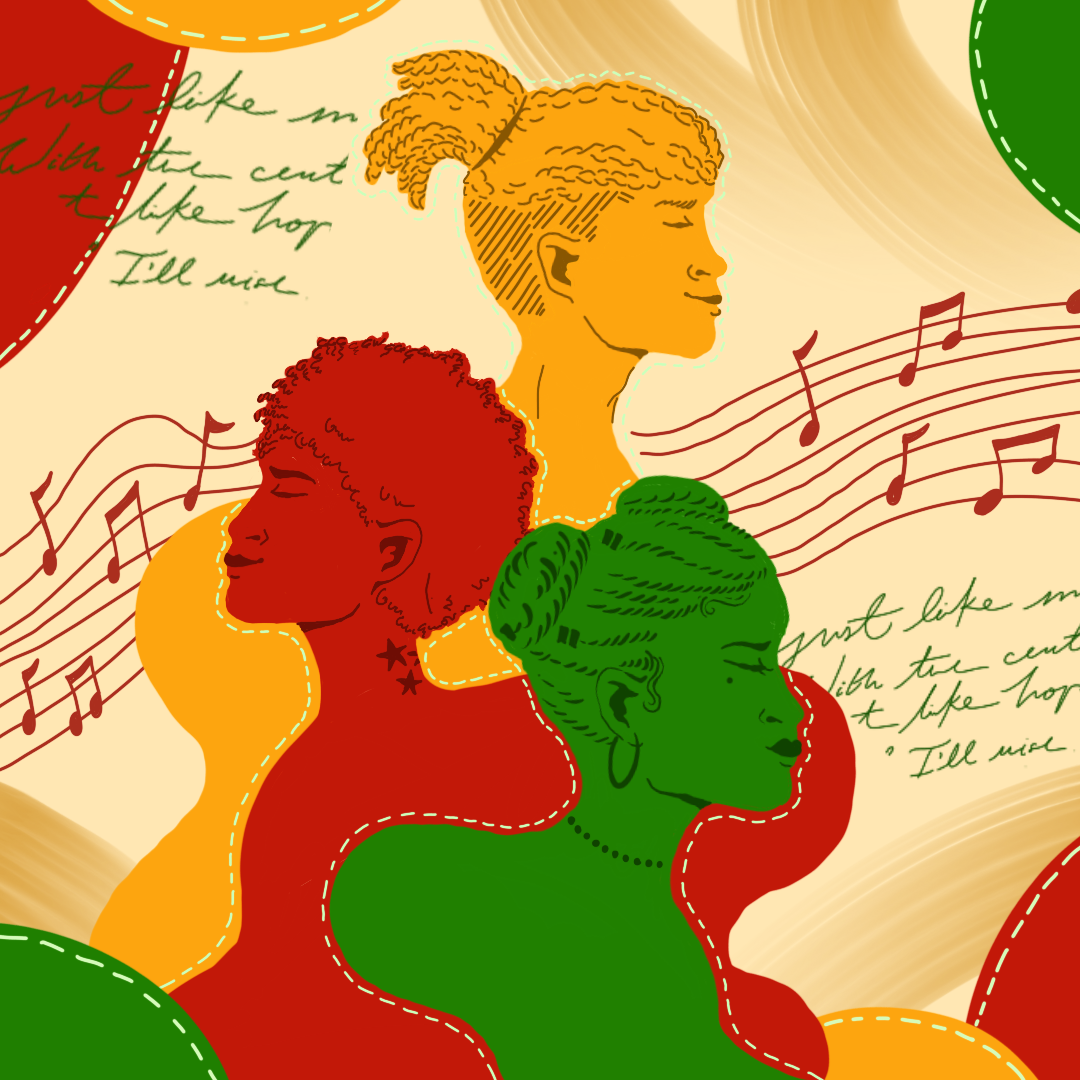As the sun beat down on Saturday, dancers wearing rattling beads, gleaming feathers and intricate face paint performed to thousands of people lining 6th Street. Neon skirts and massive butterfly wing capes twirled all the way to East 4th Street and onto festival grounds.
On Oct. 26, the Mexic-Arte Museum hosted the 41st annual Viva la Vida Festival and Parade, celebrating Día de los Muertos. Starting at noon, the parade ran from 6th Street to East 4th Street and Congress, culminating on the festival grounds, which stayed open until 6 p.m. Both the parade and festival celebrated Mexican culture through artistic expression and community. Artists founded the event hoping to increase their neighborhood’s sense of community, and Viva la Vida now hosts more than 20,000 people annually.
“(A) huge part of Mexic-Arte’s mission is to uplift and preserve underserved communities who don’t typically have access to art,” said Kaitlyn Zaldana, the museum’s special events and marketing coordinator and ’22 alumna. “That’s something we try to bring out within the festival and parade by making it free to attend, free to participate in and as accessible as possible for the community.”
The festival hosts vendors selling traditional Day of the Dead goods. Zaldana said Mexic-Arte provides the shops with promotional materials and highlights them on the museum’s newsletter. Yesenia Esquivel, founder and owner of Sweets N Spicy ATX, sold her dulces enchilados for the second year at Viva la Vida.
“I had someone come up to me, and they were like, ‘What are you doing?’ When I told them, ‘Day of the Dead parade,’ they were like, ‘We’ve never heard of that. Can you explain?’” Esquivel said. “Being able to explain to people who probably never heard of what the Day of the Dead is — it’s really awesome to share our culture.”
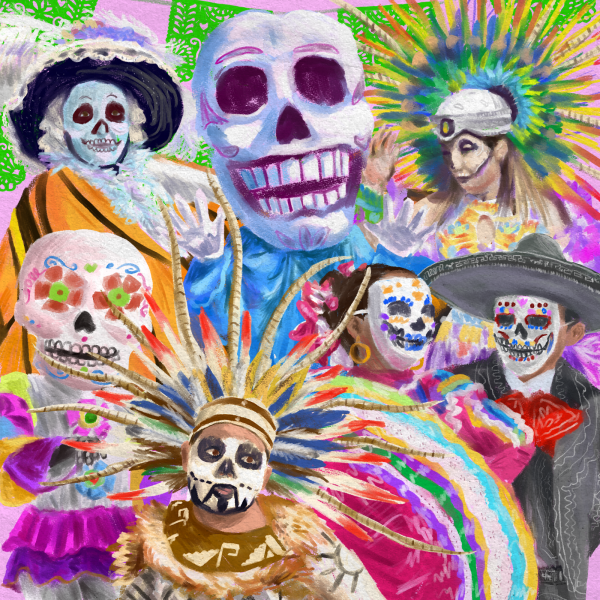
The five-section parade features large props and decorations, commissioned in part by Mexic-Arte. UT students frequently volunteer moving the pieces. Journalism senior Bella Larralde found Viva la Vida through her sorority, Kappa Delta Chi. Larralde said she looked forward to the parade and festival.
“I have been on this whole identity crisis since coming to college, so I’ve been finding things to connect with my culture more,” Larralde said. “The fact that this is for Día de los Muertos makes it all the better because I haven’t been a part of an event like that.”
A portion of this year’s parade was inspired by Quetzalcoatl, a feathered serpent god. The main piece of this section was a blue, green and red 20-foot long paper Quetzalcoatl. Dancers wearing towering feathered headdresses, vibrant red and intense black led the float as it weaved down 6th.
“I am always so impressed with the way that artists and people in the community surprise you,” Zaldana said. “Seeing the personal growth of not just what’s going on here at the museum but the Austin community is remarkable.”

